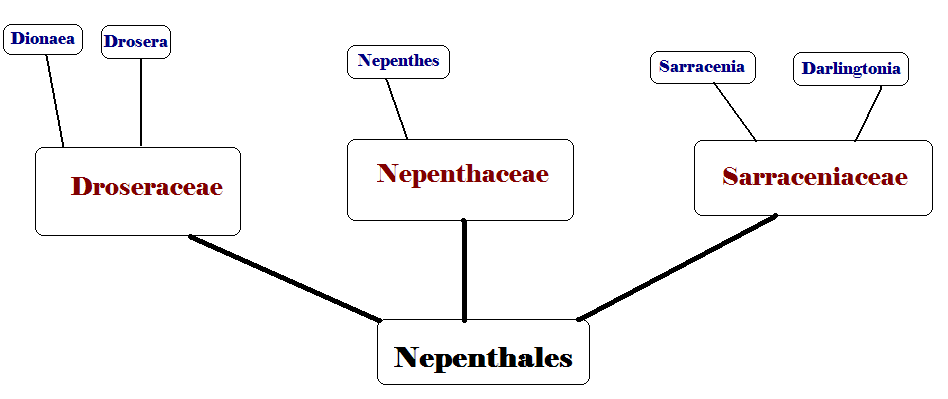Sarracenia rubra
Classification
The taxonomy of Sarracenia rubra is difficult to understand. There are multiple formats that have been used by taxonomists to classify the pitcher plant. As a result, it is difficult to recognize how the species is categorized. Therefore, to obtain a general idea of the taxonomy, the format that is commonly recognized for Sarracenia rubra is that the plant is classified as one species with five subspecies.
Eukarya:
Sarracenia rubra is in the
domain Eukarya because it has cells with membrane enclosed organelles and a
nucleus.
Kingdom:
Sarracenia rubra is in the
kingdom Plantae because it is a eukaryotic organism that has cells with cell
walls and are capable of conducting photosynthesis.
Phylum:
Sarracenia rubra is in the
phylum Anthophyta because it is a plant that flowers and produces seeds that
are contained in an ovary.
Class: Sarracenia rubra
is in the class dicotyledons because it has two cotyledons, which are the initial leaves formed in the plant. Furthermore, the plant’s vascular tissue is in a circular formation in the stem. The flowers have petals in groups of four or five.
Order:
Sarracenia rubra is in the
order Nepenthales because it is a flowering plant that has leaves that are
specialized for seizing prey. The order is made up of three families, the
Droseraceae, the Nepenthaceae, and the Sarraceniaceae.
Family:
Sarracenia rubra is in the
family Sarraceniaceae because the leaves of the plant have shaped into a
pitcher and are specialized at catching prey. The pitcher
is long and cylindrical with an opening at the top.
Genus:
Sarracenia rubra is in the
genus Sarracenia
because the plants grow in groups or clusters, which generate tubular
pitcher leaves. The pitcher leaves are specialized for catching and
digesting insects. The plants grow from an underground rhizome and have
individual flowers. The single flowers have a distinctive structure, which
includes five petals (dicot) that surround a uniquely shaped style. The
plants flower from April to May and develop new pitchers. All of the plants
have lids to prevent the pitcher from destruction from rain. The common
victims of the genus are wasps, bees, ants, and flies. The plants are
commonly found in wet and damp environments.
Species:
Sarracenia rubra
has red and maroon colored flowers. The species of
pitcher plant is found in the southeastern

The phylogenetic tree divides the order Nepenthales into the families, and then genus that relate to Sarracenia rubra.
Click the link to learn about one of Sarracenia rubra's relatives!
Sarracenia rubra, originates from the Latin word for red, as a result of the plant’s flowers and leaves. The common names for this species of pitcher plant is the sweet pitcher plant and red pitcher plant.
Nutrition
Click the link to see what Sarracenia rubra eats for dinner!
